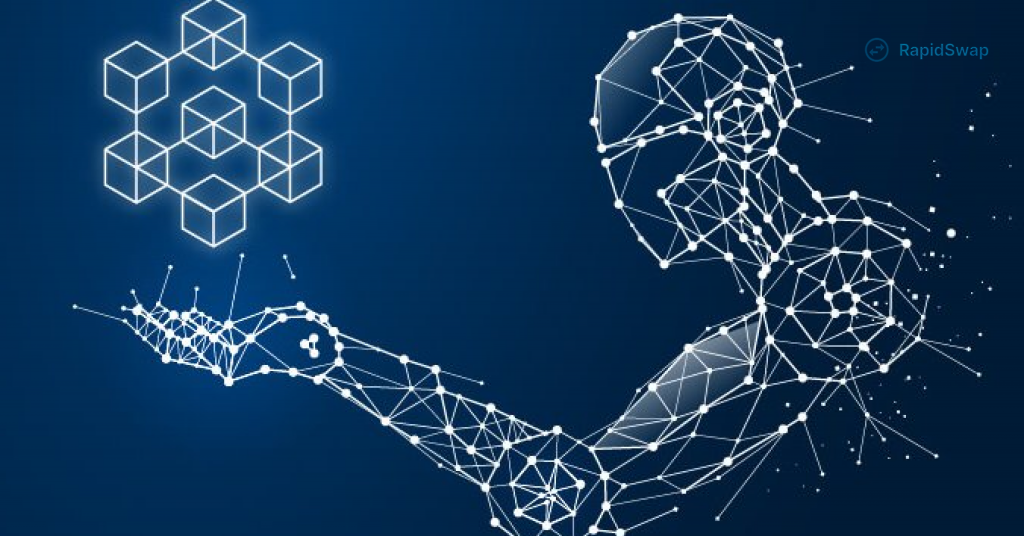Have you ever wondered what exactly blockchain is and how it works? This buzzword is frequently mentioned, yet many are still unclear about its true meaning and potential.
Blockchain technology has garnered significant attention, especially with the rise of cryptocurrencies like Bitcoin. However, its applications extend far beyond digital currencies. Understanding blockchain is essential as it has the potential to disrupt various industries and revolutionize how we conduct transactions and store data.
What Is Blockchain Technology?
Blockchain technology is a decentralized ledger system that uses a distributed network and cryptographic hashing to securely record and verify transactions. By providing a secure, immutable, and distributed ledger shared among a network of computers, blockchains ensure data security and resistance to modification.
These distributed ledgers are the backbone of cryptocurrencies such as Bitcoin but have expanded to form the foundation for DeFi applications, NFTs, and smart contracts.
What Is a Blockchain in Simple Terms?
A blockchain is like a shared database or ledger where information is stored in blocks. Think of it like Google Docs:
Real-time Collaboration and Transparency: Just as multiple users can view and edit a Google Docs document simultaneously, participants in a blockchain network can see transactions being added in real-time.
Decentralized Access: Like Google Docs’ cloud-based nature, blockchain operates on a decentralized model. Each participant on the network has a complete copy of the blockchain.
Immutable History: Similar to Google Docs’ Version History, blockchain records are immutable. Once a transaction is added, altering it requires changing every subsequent block, ensuring data integrity.
Consensus and Validation: Google Docs flags conflicts when multiple users edit simultaneously. Blockchain requires consensus from network participants to validate transactions.
Security through Transparency: Google Docs’ real-time visibility means unauthorized changes are quickly spotted. Blockchain’s transparency makes tampering evident.
Why Is Blockchain Important?
Blockchain’s significance lies in its transformative potential across industries. It offers unparalleled transparency with an unchangeable ledger, enhancing trust in sectors like banking, supply chain, and healthcare.
How Are Blockchains Used?
Financial Transactions: Secure financial transactions without intermediaries and reduced fraud risks.
Healthcare: Revolutionizes medical record management by securely storing patient data and facilitating efficient sharing among providers.
Banking and Finance: Accelerates interbank payments, minimizing fraud and cutting costs.
Currency: Provides a stable financial system by reducing risks and transaction fees.
Property Records: Modernizes property record management, reducing disputes and fraud.
Smart Contracts: Automates agreements based on set terms, ensuring transparent and tamper-proof transactions.
Supply Chains: Tracks product journeys from source to destination, enhancing quality control and efficiency.
Voting: Enhances voting integrity by preventing fraudulent transactions and ensuring transparency.
What Are the Key Components of Blockchain Technology?
Cryptographic Keys: Secure and verify transactions, ensuring only authorized access.
Network of Computers (Nodes): Validate and record transactions, maintaining a decentralized network.
Shared Public Ledger: Stores all transaction data chronologically and immutably.
What Is a Block?
A block holds a set of data within a blockchain network. It includes:
- Data: Varies depending on the blockchain application.
- Nonce: A random number generated during mining, adding complexity to the hash generation process.
- Hash: A unique fingerprint of the block’s contents, ensuring data integrity.
What Is Public Key Cryptography?
Public key cryptography uses a pair of keys: a public key (openly shared) and a private key (kept secret). It secures blockchain transactions by allowing users to verify data integrity without revealing private keys.
What Is a Miner in Blockchain?
Miners validate and add new transactions to the blockchain by solving complex mathematical puzzles. Successful miners receive rewards in digital currency, ensuring the network’s integrity and security.
What Is a Nonce in Blockchain?
A nonce is a 32-bit number used in Bitcoin mining. Miners generate nonces to solve puzzles and add new blocks, ensuring data security and immutability.
What Is Decentralization in Blockchain?
Decentralization distributes power and data across a network, enhancing trust and integrity. It ensures that no single entity controls the blockchain, making it secure and transparent.
What Are Layers in Blockchain?
Blockchain layers increase scalability and flexibility. The base layer provides core infrastructure and security, while additional layers enhance functionality and performance.
How Does Blockchain Work?
- Initiate the Transaction: Records an exchange of assets in the distributed ledger.
- Gain Consensus: Network participants validate and confirm transactions.
- Link the Blocks: Blocks are connected using cryptographic hashes, ensuring data integrity.
- Share the Ledger: The latest copy of the ledger is distributed to all participants, promoting transparency and consistency.
Blockchain technology, with its decentralized and secure nature, has the potential to revolutionize various industries. By understanding its fundamentals, we can better appreciate its transformative power and the vast possibilities it offers.

